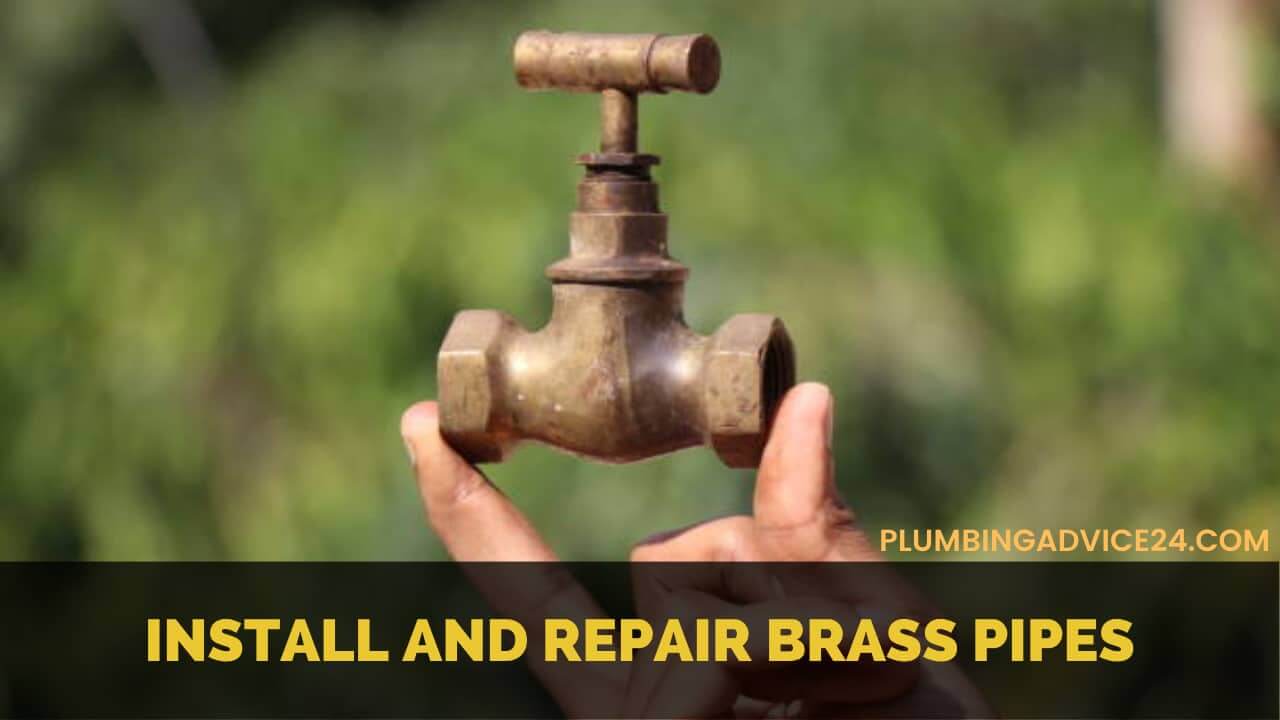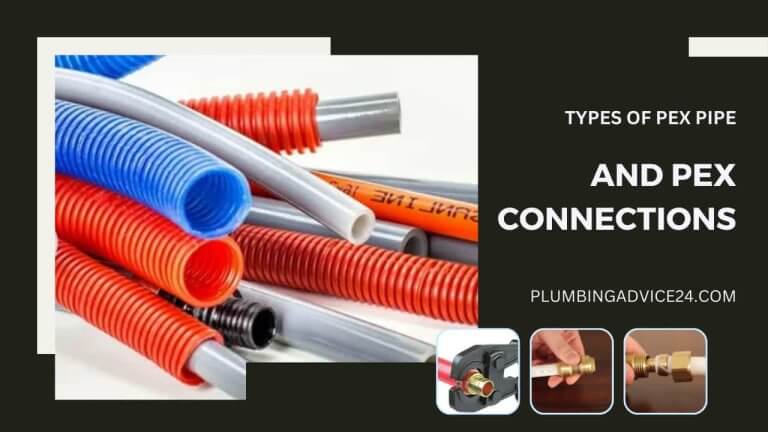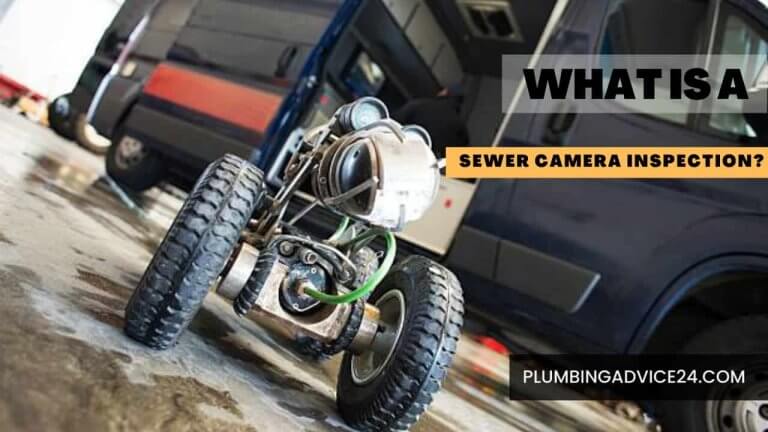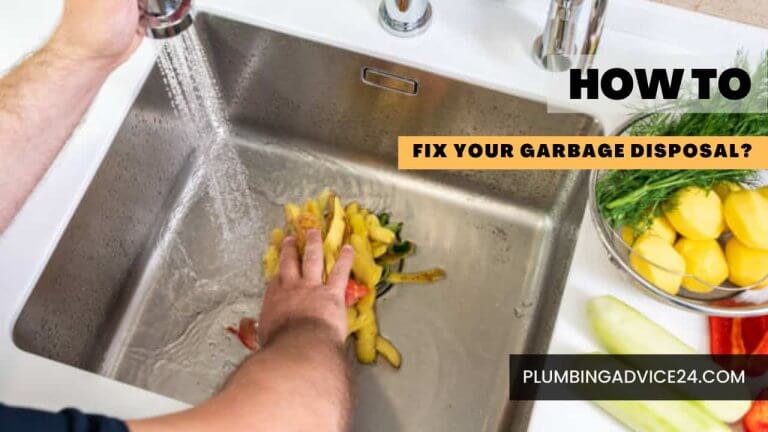How to Install and Repair Brass Pipes
The advantages and disadvantages of installing brass plumbing pipes are similar to copper tubing, except that brass pipes can be used in sewer pipes under pressure, and the joints between brass pipes can be screwed or soldered. Repair brass pipes are also similar to copper pipes, as brass is made from an alloy of copper and zinc with high copper content.
How to Install Brass Pipe?
Brass piping is a long-lasting material that does not corrode on the inside and does not cause friction damage inside the pipe. Brass pipes are easier to draw than steel pipes and are excellent for hot water and large distribution systems, such as pump fittings, water tanks, and wells. Now we will see how to install brass pipe.
Following are the three ways to install brass pipes.
- Pipe Thread Sealant
- Brass Compression Fittings
- Brass Push-to-Fit Connection
1. Pipe Thread Sealant
Pipe thread sealant can be used to install brass pipes. It can be found at your nearest store.
Consider the following steps to install a brass pipe with pipe thread sealant.
- Wipe the threaded section of each piece of brass pipe with a clean rag. Before applying thread sealant, make sure the pipes you are sealing are clean and dry.
- Slide a brass slip nut on each non-threaded end of the pipe with the threads of the nuts against the non-threaded end of the pipe. Push a slip washer onto the same non-threaded end of each brass pipe. Make sure the tapered end of each washer faces away from the slip nut. Push the washers up each pipe three to four inches.
- Coat the threads of each brass pipe with pipe thread sealant using a brush attached to a sealant can lid. Reapply sealant to achieve complete coverage. By the time you’re done, you’ll barely be able to see the threads.
- Be sure to spread the pipe thread sealant only on the threaded section of the male pipe segment, not on the female threads or any other part of the pipe.
- Slide the non-threaded end of one brass pipe into the threaded end of the other brass pipe. Screw the male segment into place until it stops turning. If necessary, use an adjustable wrench to finish tightening the pipe.
- Push the inserted pipe slip nut and washer onto the threaded section of the second piece of brass pipe. Turn the slip nut clockwise until it stops turning.
- Remove excess pipe thread sealant around the pipe joint with a clean rag.
- The sealant will take up to 48 hours to set. Turn off the water flow to the pipes until the sealant has had enough time to form a secure seal.
2. Brass Compression Fittings
A brass compression fitting is a type of pipe joint that joins two pipes together to form a series.
Consider the following steps to install a brass pipe with brass compression fittings.
- If necessary, cut the end of the pipe using a brass pipe cutter.
- Remove the sharp, jagged edges inside the pipe end with a reaming tool.
- Clean the burrs inside the pipe with a rag.
- Slip the nut from the brass compression fitting onto the pipe, then slip on the compression ring. Slide both pieces down so they are 1 inch or so from the end of the brass pipe.
- Hold the fitting against the brass pipe and slide the compression ring against the fitting. Slide the nut onto the ring, thread it onto the brass fitting, and hand tightens. Use a wrench gently if needed.
3. Brass Push to Connect Fittings
Brass push-to-connect fittings also called brass shark bite fittings, are also a type of pipe fitting. A brass tube is very easy to join with push-to-fit fittings, and it is also easy to disassemble. Due to this, it is used more.
Consider the following steps to install a brass pipe with a push to fit.
- Make sure the pipe is not damaged. If a brass pipe is suitable, cut the pipe squarely using a tube cutter.
- Using a de-burring tool, remove all debris and sharp edges.
- Locate the end of the pipe squarely in the opening of the fitting and push the pipe into the fitting with a slight twisting action until the pipe reaches the tube stop.
- Ensure the insertion depth mark on the brass tube lines up with the disconnecting ring on the shark bites fitting. Pull the tube to make sure the joint is secure.
Before doing the brass installation, keep the following points in mind.
- Handle brass pipe or fittings with care.
- Do not use a pipe wrench.
- Always use a suitable sealant or Teflon tape on tapered threads.
- Use only smooth-jaw, adjustable wrenches that are perfect and even.
- Place the wrench only on the provided wrench flats, not on round surfaces.
- Use extra care not to overtighten connections, which may distort or break the brass.
Related Post : What Is Brass Pipe | Brass Pipe Applications | Brass Plumbing Pipe Size | Brass Pipe Cost
How to Connect Pvc Pipe to Brass Pipe?
Many people recommend using Teflon tape and silicone-based joint compound on threaded brass fittings to connect brass pipe to PVC pipe to ensure the joint is completely leak-free. When applying the tape clockwise, it is recommended that you wrap it around the thread three or four times. Don’t do too much magic to stop the leak, or you won’t get the nut.
- Connect the female adapter to the PVC pipe with primer and glue. Wrap the brass pipe threads several times with Teflon thread tape. Screw both by hand. Hold the brass pipe with a wrench and tighten the PVC fitting onto the brass pipe with another wrench.
- Slide one compression nut onto the brass pipe and one onto the PVC pipe. Attach rubber seals to each pipe. Fit the two pipes into the coupling until they meet in the middle. Screw each nut onto the coupling by hand. Holding the coupling in the center with a wrench, tighten the nut with another wrench.
- Loosen the metal band of the rubber no-hub coupling with a screwdriver. Insert the end of the PVC pipe into one end and the end of the brass pipe into the other until both are centered. Tighten the band evenly with a screwdriver.
How to Install Copper to Brass Threaded Connection?
As an alloy of copper and zinc, brass is compatible with copper, and manufacturers make many common plumbing fittings with the material. Solder adheres to brass as well as copper, so fittings are usually molded with slip joints so you can solder them to pipes.
- Sand around the ends of the copper pipe with an emery cloth. Keep sanding until the end of the copper pipe is shiny. Push the round wire brush into the copper pipe inlet of the brass fitting, and rotate frequently.
- Brush a thin layer of soldering paste on the outer ends of the brass pipe and copper pipe and the inside of the inlet of the brass fitting. Push the brass fitting onto the end of the copper pipe.
- Using a propane torch, heat around the seam where the end of the pipe enters the brass fitting. Touch the tip of the solder to the seam. If the solder melts easily, apply solder around the seam. If the tin alloy does not melt, continue to heat and check every 15 seconds to see if the tin alloy melts.
- Wipe off all excess solder and flux residue from the seams with a rag. Allow the brass fitting to cool completely.
- Wrap white sealing tape clockwise twice around the male threaded end of the brass fitting. Screw the device onto the threaded end of the brass fitting. Tighten the device into the fitting with pump pliers.
How to Repair Brass Pipes?
Brass plumbing pipes have a good lifespan, and they are useful for making the house look good. Like all materials, brass pipe shows signs of failure after some time and can cause problems such as pinhole leaks or cracks. We will now look at solving these problems in which we will understand the ways to repair brass pipes.
There are four general methods for repairing brass pipes, which are as follows.
- Pipe Repair Epoxy Putty
- Pipe Repair Tape
- Pipe Repair Bandage
- Soldering Brass Pipe
Now let’s see how to repair brass pipes with this pipe repair method.
1. Pipe Repair Epoxy Putty
Repair epoxy putty is the easiest way to repair brass pipes. Epoxy putties consist of two components, a resin and a hardener. When mixed together, these ingredients form a material that can be used to plug holes before setting into a hard material.
Superfast Epoxy Putty Stick combines two components into one ready-to-use stick. You simply break out the required amount of putty and mix it. Once the epoxy putty is completely mixed, it will mix two different colors into one color.
This mixture can be applied to the area of brass pipe that needs repair and fills the hole or crack. After filling the hole or crack, wait one hour to start the flow in this pipe.
2. Pipe Repair Tape
Pipe burst tape is used as brass pipe leak repair tape. The tape is made from silicone and other advanced polymers and seals the leak by forming a tight rubber band around it.
Wrap & Seal Pipe Burst Tape is the most effective pipe repair tape on the market and is very easy to apply. Before you stretch the tape to its full length and wrap it around the brass pipe next to the leak area until the leak is sealed, wait 30 minutes to reuse the repaired brass pipe.
3. Pipe Repair Bandage
For a long-lasting repair of brass pipe, you should overwrap either epoxy putty or pipe repair tape with a SilWap pipe repair bandage.
These strips are fiberglass pipe wrap coated with a water-active resin. Once immersed in water, they set the stone hard in less than 30 minutes to provide an impact-resistant layer over the original repair material and permanent repair.
4. Soldering Brass Pipe
Soldering brass pipe or sweating brass pipe is harder work than the other three methods listed and requires precision to work with. But it can be a permanent solution to fix brass pipes. Before soldering, you have to close the main water valve and clean the pipe with a wet cloth.
After cleaning the damaged area, add the flux you will use for soldering to the pipe. Heat the flux with a blowtorch until it changes color, and then add solder to the hole. This will block the hole, seal the leak and return the pipe to full working order.
Keep the following points in mind while soldering.
- Use protective gloves and safety glasses when using a hand torch.
- Do not allow children to enter the area where you are soldering.
- Read the instructions that come with your torch and solder before starting your project.
- Use only lead-free soldering fittings for soldering.
- The torch flame should be blue while soldering.
- Always remove the torch from the fuel cylinder and store the fuel in an upright position after completing your project.
Related Post : Types of Water Pipes for Homes | Pipes for Water Supply
How to Brass Pipe Leak Repair?
There are four ways to repair brass pipes, which are as follows.
- Pipe Repair Epoxy Putty
- Pipe Repair Tape
- Pipe Repair Bandage
- Soldering Brass Pipe
How Do You Fix a Pinhole Leak in a Brass Pipe?
The easiest method to repair brass pipes is to fill them with epoxy putty since pinhole leaks are small. The best tool for the job is an epoxy putty stick, which combines resin and hardener in a pre-measured format. To use an epoxy putty stick, you tear off the required amount of putty and mix it by hand. And then apply across the area that needs repair.
Does Plumbers Tape Fix Leaks?
Pipe thread tape is sometimes referred to as “Teflon tape” or “plumber’s tape.” It is often used to fix leaking pipe joints. Another type of tape you may have seen is called “self-amalgamating,” “self-fusing,” or “leak repair” tape. It is used to repair hairline cracks or other non-joint pipe leaks.
Can You Solder a Leaking Brass Pipe?
Solder adheres to brass as well as copper, so fittings are usually molded with slip joints so you can solder them to pipes. But while soldering, makes sure that the solder you use is lead-free.
Can You Mix Brass and Copper Fittings?
Brass does not react with copper or zinc, so one method is to make sure you have threaded female ends on both the copper and steel pipes and then connect the two by inserting a short threaded brass nipple between them.
If You Liked This Post? So Share It with Your Friends
Suggested Articles:

















